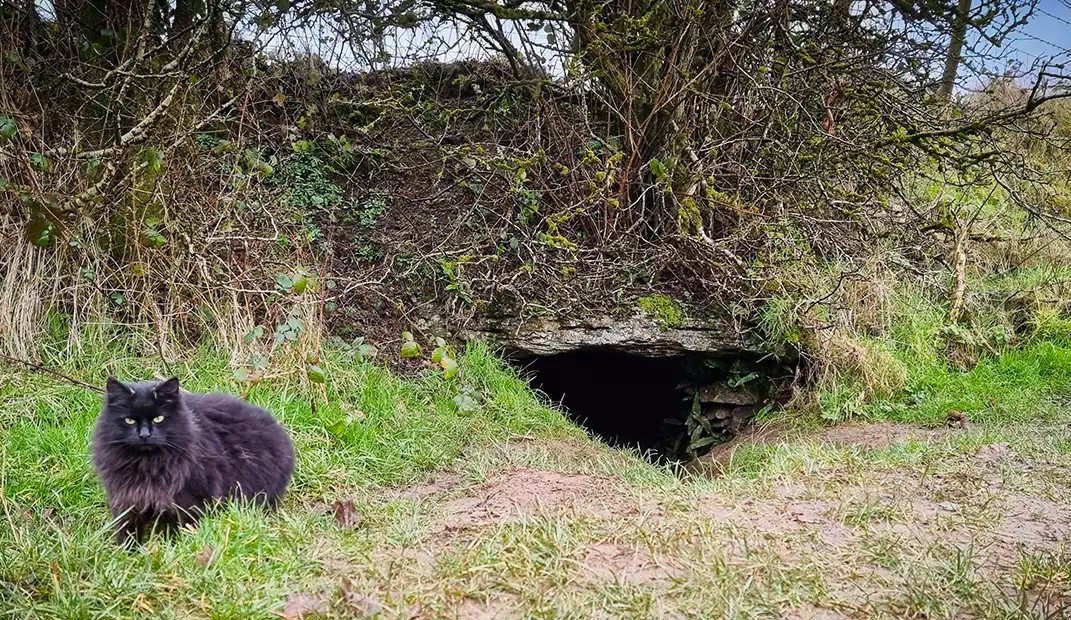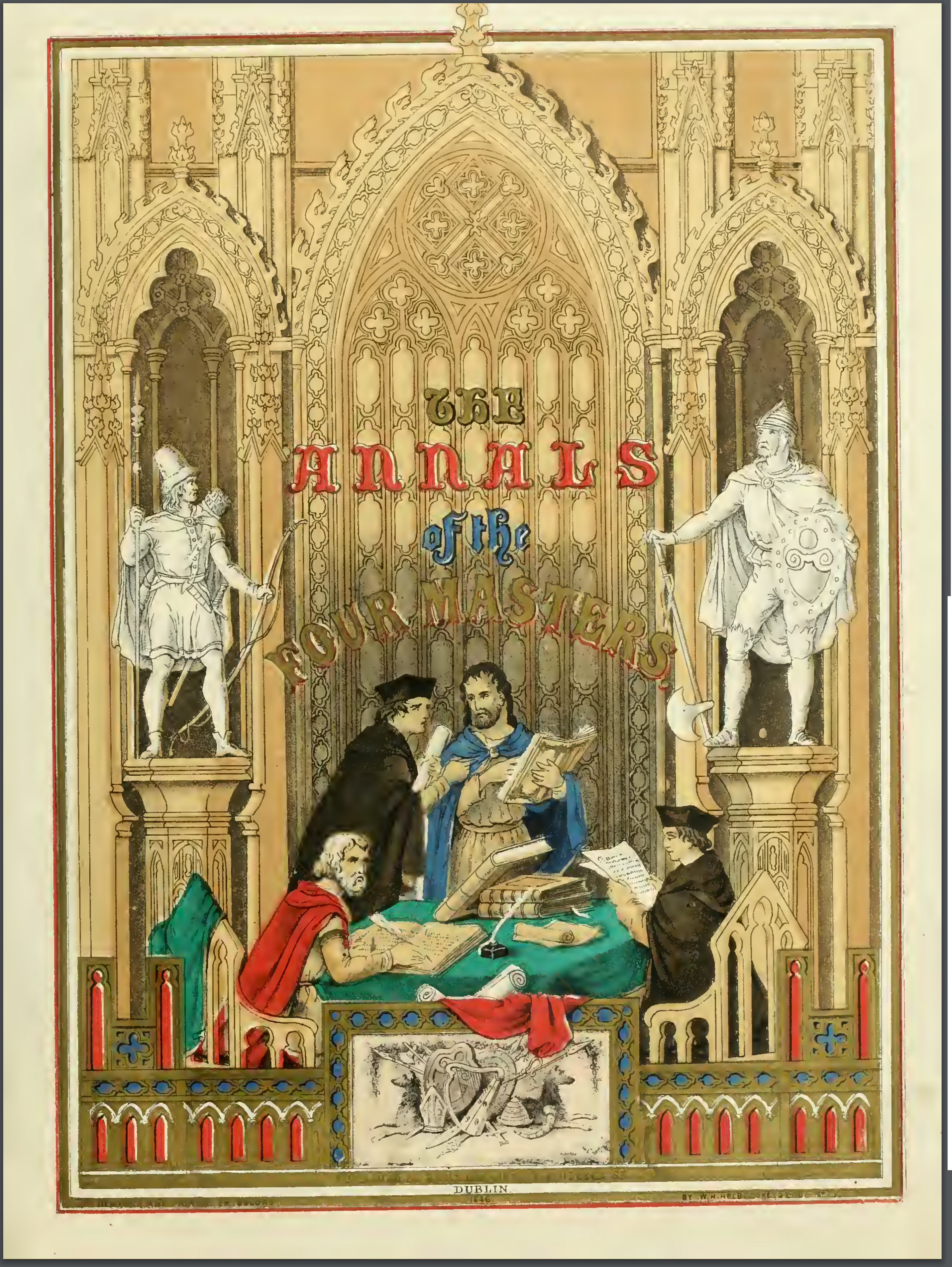|
Sétna Airt
Sétna Airt, son of Artrí, son of Éber, son of Ír, son of Míl Espáine, was, according to medieval Irish legend and historical tradition, a High King of Ireland. He came to power after the death of the previous incumbent, Rothechtaid mac Main, whom, according to one version of the story, he had killed in single combat at Cruachan, fighting to protect his son, Fíachu Fínscothach. He ruled for five years, until Fíachu, returning from exile, killed him at Cruachan. Geoffrey Keating adds that Fíachu returned to Cruachan in a "black fleet", and the ''Annals of the Four Masters'' says he was assisted in the killing of Sétna by the future High King Muinemón.''Annals of the Four Masters The ''Annals of the Kingdom of Ireland'' () or the ''Annals of the Four Masters'' () are chronicles of Middle Ages, medieval Irish history. The entries span from the Genesis flood narrative, Deluge, dated as 2,242 Anno Mundi, years after crea ...'M3842-3842/ref> The chronology of Keating ... [...More Info...] [...Related Items...] OR: [Wikipedia] [Google] [Baidu] |
Míl Espáine
In Irish origin myths, Míl Espáine or Míl Espáne (later Latinization of names, Latinized as Milesius) is the mythical ancestor of the final inhabitants of Ireland, the "sons of Míl" or Milesians (Irish), Milesians, who represent the vast majority of the Irish Gaels. His father was Bile (Irish legend), Bile, son of Breogan. Modern historians believe he is a creation of medieval Irish Christian writers. Name and origin Mark Williams characterises the name ''Míl Espáine'' as an "etymological figment" translated from the Latin ''mīles Hispaniae'', meaning "soldier of Hispania (Spain)", attested in a passage (§ 13) in the 9th-century work ''Historia Brittonum'' (''"The History of the Britons"'') by Nennius. As A.G. van Hamel has suggested, the status of Iberia as the land of origin can be traced back to Isidore of Seville, who in the introduction to his Historia de regibus Gothorum, Vandalorum et Suevorum, history of the Goths, Vandals and Suebi had elevated Iberia/Hispania ... [...More Info...] [...Related Items...] OR: [Wikipedia] [Google] [Baidu] |
High King Of Ireland
High King of Ireland ( ) was a royal title in Gaelic Ireland held by those who had, or who are claimed to have had, lordship over all of Ireland. The title was held by historical kings and was later sometimes assigned anachronously or to legendary figures. Medieval and early modern Irish literature portrays an almost unbroken line of High Kings, ruling from the Hill of Tara over a hierarchy of lesser kings, stretching back thousands of years. Modern historians believe this scheme was crafted in the 8th century from the various genealogical traditions of powerful dynasties, and intended to justify their status by projecting it far into the past.Dáibhí Ó Cróinín, "Ireland, 400–800", in Dáibhí Ó Cróinín (ed.), ''A New History of Ireland 1: Prehistoric and Early Ireland'', Oxford University Press, 2005, pp. 182–234. John T. Koch explains: "Although the kingship of Tara was a special kingship whose occupants had aspirations towards supremacy among the kings of Irela ... [...More Info...] [...Related Items...] OR: [Wikipedia] [Google] [Baidu] |
Rothechtaid Mac Main
Rothechtaid, son of Maen, son of Óengus Olmucaid, was, according to medieval Irish legend and historical tradition, a High King of Ireland. He came to power by killing the previous incumbent, his grandfather's killer Énna Airgdech, in the battle of Raigne. He ruled for twenty-two years. The ''Lebor Gabála Érenn'' gives two versions of his death. In one version, he was killed in single combat in Cruachan by Sétna Airt, who fought to protect his son Fíachu Fínscothach. In the other version, he died of his wounds in Tara. The chronology of Geoffrey Keating's ''Foras Feasa ar Éirinn'' dates his reign to 1005–980 BC, that of the ''Annals of the Four Masters'' to 1383–1358 BC.''Annals of the Four Masters The ''Annals of the Kingdom of Ireland'' () or the ''Annals of the Four Masters'' () are chronicles of Middle Ages, medieval Irish history. The entries span from the Genesis flood narrative, Deluge, dated as 2,242 Anno Mundi, years after crea ...'M3817-3842/ref> ... [...More Info...] [...Related Items...] OR: [Wikipedia] [Google] [Baidu] |
Cruachan, Ireland
Rathcroghan () is a complex of archaeological sites near Tulsk in County Roscommon, Ireland. It is identified as the site of Cruachan, the traditional capital of the Connachta, the prehistoric and early historic rulers of the western territory. The Rathcroghan Complex (Crúachan Aí) is an archaeological landscape with many references found in early Irish medieval manuscripts. Located on the plains of Connacht (Mag nAí/Machaire Connacht), Rathcroghan is one of the six Royal sites of Ireland. The landscape extends over and consists of over 240 archaeological sites, 60 of which are protected national monuments. The monuments range from the Neolithic (4000–2500 BC), the Bronze (2500–500 BC) and Iron Ages (500 BC–400 AD), to the medieval period. These monuments include burial mounds, ringforts and medieval field boundaries amongst others. The most prominent of these are the multi-period Rathcroghan Mound, the Oweynagat cave, the Mucklaghs (a set of linear earthworks), and ... [...More Info...] [...Related Items...] OR: [Wikipedia] [Google] [Baidu] |
Fíachu Fínscothach
Fíacha Fínscothach, son of Sétna Airt, was, according to medieval Irish legend and historical tradition, a High King of Ireland. His father became High King after killing the previous incumbent, Rothechtaid mac Main, in single combat at Cruachan in defence of Fíachu. Fíachu went into exile, but returned at the head of a "black fleet", and, with the assistance of Muinemón, killed his father and took the throne himself. "Flowers of wine" (Old Irish: ''fín'', "wine"; ''scoth'', "flower", ''-ach'', possessive suffix, although ''scoth'' can also mean "blade" and "voice"), which were pressed into glass vats, were said to exist during his reign. He ruled for twenty years, until he was killed by his former accomplice, Muinemón. The chronology of Geoffrey Keating's ''Foras Feasa ar Éirinn'' dates his reign to 975–955 BC, that of the ''Annals of the Four Masters'' to 1353–1333 BC.''Annals of the Four Masters The ''Annals of the Kingdom of Ireland'' () or the ''Annals of t ... [...More Info...] [...Related Items...] OR: [Wikipedia] [Google] [Baidu] |
Geoffrey Keating
Geoffrey Keating (; – ) was an Irish historian. He was born in County Tipperary, Ireland, and is buried in Tubrid Graveyard in the parish of Ballylooby-Duhill. He became a Catholic priest and a poet. Biography It was generally believed until recently that Keating had been born in Burgess, County Tipperary; indeed, a monument to Keating was raised beside the bridge at Burgess, in 1990; but Diarmuid Ó Murchadha writes, In November 1603, he was one of forty students who sailed for Bordeaux under the charge of the Rev. Diarmaid MacCarthy to begin their studies at the Irish College which had just been founded in that city by Cardinal François de Sourdis, Archbishop of Bordeaux. On his arrival in France he wrote ''Farewell to Ireland'', and upon hearing of the Flight of the Earls wrote ''Lament on the Sad State of Ireland''. After obtaining the degree of Doctor of Divinity at the University of Bordeaux he returned about 1610 to Ireland and was appointed to the cure of souls ... [...More Info...] [...Related Items...] OR: [Wikipedia] [Google] [Baidu] |
Annals Of The Four Masters
The ''Annals of the Kingdom of Ireland'' () or the ''Annals of the Four Masters'' () are chronicles of Middle Ages, medieval Irish history. The entries span from the Genesis flood narrative, Deluge, dated as 2,242 Anno Mundi, years after creation to AD 1616. Publication delay Due to the criticisms by 17th-century Irish historian Tuileagna Ó Maol Chonaire, the text was not published in the lifetimes of any of the participants. Text The annals are mainly a compilation of earlier annals, although there is some original work. They were compiled between 1632 and 1636, allegedly in a cottage beside the ruins of Donegal Abbey, just outside Donegal (town), Donegal Town. At this time, however, the Franciscans had a house of refuge by the River Drowes in County Leitrim, just outside Ballyshannon, and it was here, according to others, that the ''Annals'' were compiled. [...More Info...] [...Related Items...] OR: [Wikipedia] [Google] [Baidu] |
Muinemón
Muinemón (later spelling Muineamhón), son of Cas Clothach, son of Irárd, son of Rothechtaid, son of Ros, son of Glas, son of Nuadu Declam, son of Eochaid Faebar Glas, was, according to medieval Irish legend and historical tradition, a High King of Ireland. He helped Fíachu Fínscothach to murder his father, Sétna Airt, and become High King, and then, twenty years later, killed Fíachu and became High King himself. He is said to have been the first king in Ireland whose followers wore golden torcs around their necks (his name may derive from Old Irish ''muin'', neck). He ruled for five years, until he died of plague at Aidne in Connacht, and was succeeded by his son Faildergdóit. The chronology of Geoffrey Keating Geoffrey Keating (; – ) was an Irish historian. He was born in County Tipperary, Ireland, and is buried in Tubrid Graveyard in the parish of Ballylooby-Duhill. He became a Catholic priest and a poet. Biography It was generally believed unt ...'s ''Foras Feas ... [...More Info...] [...Related Items...] OR: [Wikipedia] [Google] [Baidu] |
List Of High Kings Of Ireland
Medieval Irish historical tradition held that Ireland had a High King (''Ard Rí'') based at Tara since ancient times, and compilations like the 11th-century ''Lebor Gabála Érenn'', followed by Early Modern works like the ''Annals of the Four Masters'' and ''Foras Feasa ar Éirinn'', purported to trace the line of High Kings. John T. Koch explains: "Although the kingship of Tara was a special kingship whose occupants had aspirations towards supremacy among the kings of Ireland, in political terms it is unlikely that any king had sufficient authority to dominate the whole island before the 9th century". Máel Sechnaill I is often considered the first historical High King, although he faced some opposition. Applying the title to earlier kings is considered anachronistic, while kings from before the 5th century are generally considered legendary. The traditional list of High Kings is thus a mixture of historical facts and legend. The annals describe some later High Kings as ... [...More Info...] [...Related Items...] OR: [Wikipedia] [Google] [Baidu] |


